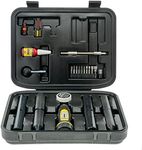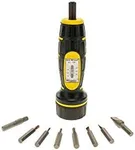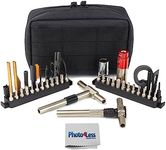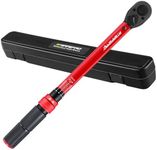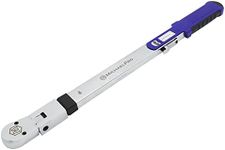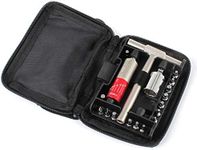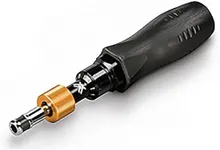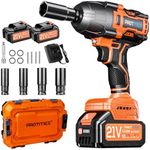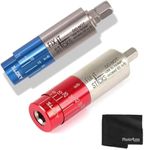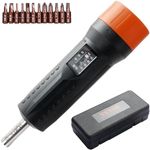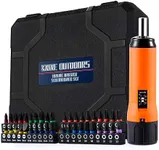Buying Guide for the Best Torque Wrench For Guns
Choosing the right torque wrench for working on firearms is important for both safety and performance. A torque wrench helps you apply the correct amount of force to screws and bolts, which is crucial for maintaining accuracy and preventing damage to your firearm. When selecting a torque wrench, you should consider the types of guns you work on, the tasks you need to perform (like mounting scopes or tightening action screws), and how often you plan to use the tool. Understanding the key specifications will help you make a choice that fits your needs and ensures your firearm is assembled and maintained properly.Torque RangeThe torque range tells you the minimum and maximum force the wrench can apply, usually measured in inch-pounds (in-lb) or Newton-meters (Nm). This is important because different gun parts require different torque settings. For example, scope rings might need 15-25 in-lb, while action screws could need 50-65 in-lb. If you only work on small firearms or optics, a lower range is fine, but if you handle a variety of guns, a wider range is better. Choose a wrench with a range that covers the torque values recommended for your specific tasks.
Drive SizeDrive size refers to the size of the square fitting where you attach sockets or bits, commonly 1/4-inch for gun work. This matters because it determines what accessories you can use with the wrench. For most gun maintenance, a 1/4-inch drive is ideal since it fits the small bits used for firearms. If you need to work on larger bolts, you might consider a bigger drive, but for most gun-related tasks, stick with 1/4-inch.
Type (Click, Beam, or Digital)Torque wrenches come in different types: click, beam, and digital. Click wrenches make a clicking sound when you reach the set torque, making them easy to use. Beam wrenches have a pointer that shows the torque as you apply force, which is simple but requires you to watch the scale. Digital wrenches display the torque on a screen and sometimes beep or vibrate at the set value. Click and digital types are more user-friendly for beginners, while beam wrenches are more basic but reliable. Choose the type that matches your comfort level and how precise you want to be.
AccuracyAccuracy tells you how close the wrench's reading is to the actual torque applied, usually given as a percentage (like ±4%). This is important because precise torque is critical for gun safety and performance. Higher accuracy is better, especially for sensitive tasks like mounting scopes. If you need to be very precise, look for a wrench with a lower percentage error. For general use, standard accuracy is usually sufficient.
Ease of AdjustmentEase of adjustment refers to how simple it is to set the desired torque value on the wrench. Some wrenches have clear, easy-to-read scales and smooth adjustment mechanisms, while others can be fiddly. If you plan to change torque settings often, look for a wrench that makes this process quick and straightforward. This will save you time and reduce the chance of mistakes.
Size and ErgonomicsThe size and ergonomics of the wrench affect how comfortable it is to use, especially for longer tasks. A compact, lightweight wrench is easier to handle for small gun parts, while a larger wrench might be needed for bigger jobs. Look for a handle that feels good in your hand and a size that matches the work you do most often. Comfort and control are important for accurate torque application.

